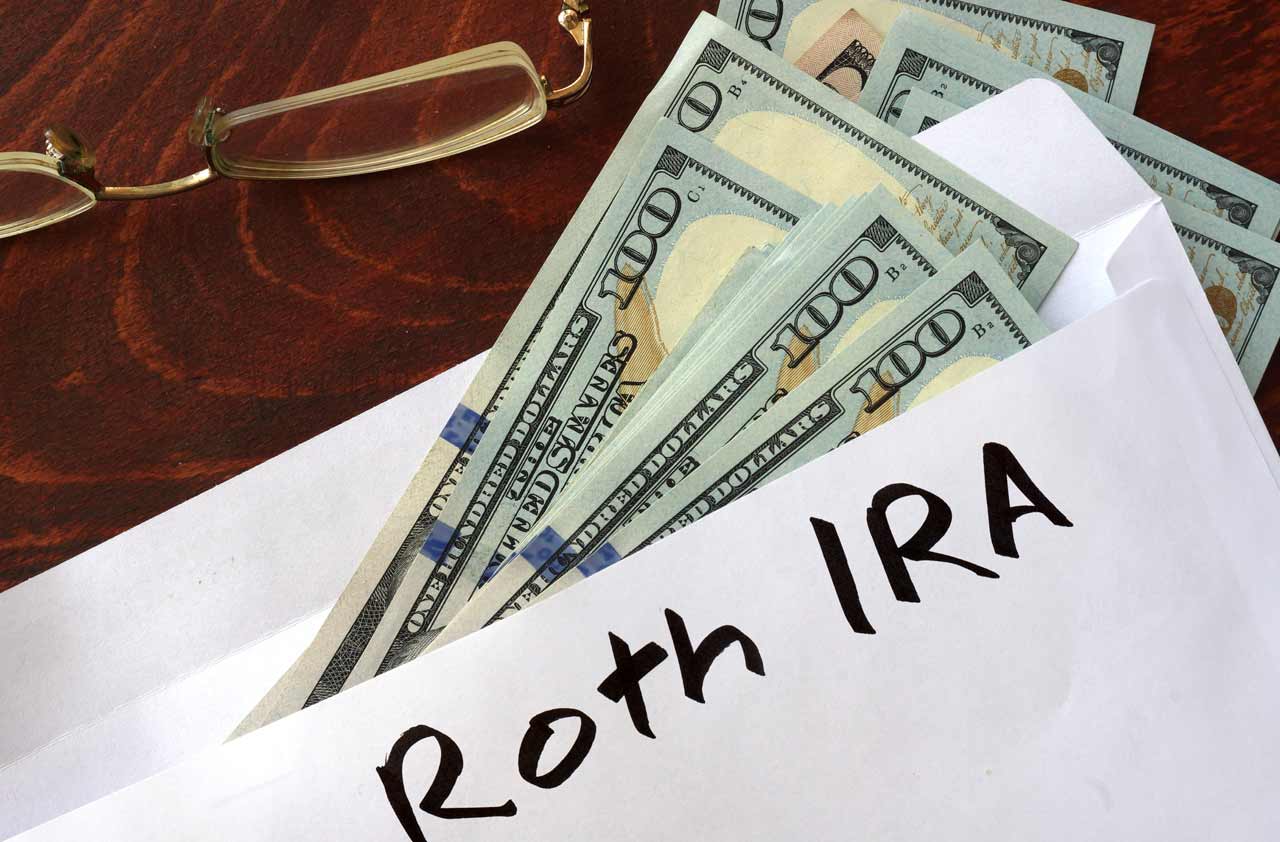How Much Can You Contribute to a Roth IRA for 2019?
The Roth IRA contribution limit is $6,000 for 2019, up from $5,500 in 2018. Retirement savers 50 and older can contribute an extra $1,000. Income limits apply.

Retirement savers have yet another reason to celebrate the Roth IRA: The maximum amount that can be contributed to a Roth in 2019 has been increased by $500. However, note that the income limits to qualify for the maximum contribution to a Roth IRA have also been increased. Here's what you need to know.
2019 Roth IRA Contribution Limits and Income Limits
The maximum amount workers can contribute to a Roth IRA for 2019 is $6,000 if they're younger than age 50. Workers age 50 and older can add an extra $1,000 per year in "catch-up" contributions, bringing the total contribution to $7,000. It's the first increase in the amount that can be contributed to a Roth IRA since 2013.
The actual amount that you are allowed to contribute to a Roth IRA is based on your income. To be eligible to contribute the maximum for 2019, your modified adjusted gross income must be less than $122,000 if single or $193,000 if married and filing jointly. Contributions begin to be phased out above those amounts, and you can't put any money into a Roth IRA once your income reaches $137,000 if single or $203,000 if married and filing jointly.

Sign up for Kiplinger’s Free E-Newsletters
Profit and prosper with the best of expert advice on investing, taxes, retirement, personal finance and more - straight to your e-mail.
Profit and prosper with the best of expert advice - straight to your e-mail.
Roth IRA income limits are higher for 2019 than they were for 2018, when your modified adjusted gross income had to be less than $120,000 if single or less than $189,000 if married and filing jointly to qualify for the maximum contribution. If your 2018 income was above those limits, you could still qualify for a partial contribution if you were single and your MAGI was greater than or equal to $120,000 but less than $135,000, or if you were filing jointly and your MAGI was greater than or equal to $189,000 but less than $199,000. You couldn't contribute to a Roth IRA for 2018 once income hit $135,000 for singles or $199,000 for joint filers.
Roth IRAs vs. Traditional IRAs
Unlike contributions to a traditional IRA, which may be tax-deductible, a Roth IRA has no up-front tax break. Money goes into the Roth after it has already been taxed. But when you start pulling money out in retirement, your withdrawals will be tax-free.
You can open a Roth IRA through a bank, brokerage, mutual fund or insurance company, and you can invest your retirement money in stocks, bonds, mutual funds, exchange-traded funds and other approved investments. You have until the federal tax filing deadline to make your Roth IRA contribution for the prior year. For most taxpayers, the deadline for filing 2019 tax returns is April 15, 2020.
Roth IRAs can help you build a sizable nest egg if you start saving early enough. For example, a 25-year-old who contributes $5,500 a year to a Roth IRA and has an annual return of 6% will accrue a nest egg of $902,262 by age 65. If that 25-year-old is in the 22% tax bracket and invested $5,500 a year in a taxable account earning a 6% annual return, the balance after 40 years would amount to about $643,500.
The difference is the brake that having to pay the IRS on each year's earnings puts on compounded growth. If you can't afford to save the entire $5,500 without the help of a tax deduction—which, if you contribute to a traditional IRA and write off $5,500 in the 22% bracket brings the out-of-pocket cost to $4,290—you might be better off with a traditional IRA.
Roths are also more flexible than traditional, deductible IRAs. You can withdraw contributions to a Roth account anytime, tax- and penalty-free. If you want to withdraw earnings tax-free, though, you must be at least age 59 1/2, and you must have owned the Roth for at least five years. The clock on the five-year holding period starts ticking on January 1 of the year you open the account.
Also, Roths—unlike traditional IRAs—are not subject to required minimum distributions (RMDs) after age 70 1/2. And you can add funds to it at any age, provided you have earned income from, say, a job or self-employment. Traditional IRAs close the door to new contributions once you turn 70 1/2, even if you’re working.
Is a Roth IRA Right for You?
Ed Slott, who is a CPA and an IRA expert in Rockville Centre, N.Y., recommends Roth IRAs for savers of all ages. But, he adds, "the younger you are when you start investing in one, the more advantageous it'll be because that creates more time for your contributions to compound tax-free."
There isn't a minimum age limit to open a Roth IRA, and you can contribute to another person's Roth account as a gift—perfect for parents looking to kick-start a child's retirement savings. Two caveats: Recipients must have earned income, and you can only contribute an amount up to that person's annual earnings or $6,000, whichever is less.
Roths can also provide valuable tax diversification in retirement. Roth IRAs are great "for people who want to balance out their sources of income—meaning that they may already have considerable sources of income that will be taxable in retirement, like a pension, 401(k)s or Social Security, and they want to build up another pot of money that will permit tax-free withdrawals," says Mari Adam, a certified financial planner in Boca Raton, Fla.
Adam also recommends Roth accounts to anyone planning to leave money to heirs. Though heirs other than a spouse must take distributions from the IRA over time, that money comes out free of any taxes.
Finally, note that if you invest in both a Roth IRA and a traditional IRA, the total amount of money you contribute to both accounts can't exceed the annual limit. If you do exceed it, the IRS might hit you with a 6% excessive-contribution penalty.
Roth IRA Savings Tips
To make the most of saving for retirement in your Roth IRA:
- Max out your contributions. For each year that you're able, aim to hit the $6,000 limit.
- Once you turn 50, add another $1,000 to that limit annually. You can add funds to your Roth for as long as you live and have earnings from work.
- Avoid withdrawing funds you contributed to your account, even though you can do so without penalties or taxes. Letting that money grow in the account over many years means a bigger nest egg in retirement.
Get Kiplinger Today newsletter — free
Profit and prosper with the best of Kiplinger's advice on investing, taxes, retirement, personal finance and much more. Delivered daily. Enter your email in the box and click Sign Me Up.

-
 Registered Social Security Analyst: The Retirement Professional You Didn’t Know You Needed
Registered Social Security Analyst: The Retirement Professional You Didn’t Know You NeededThe services of a Registered Social Security Analyst (RSSA) are often overlooked. Yet, for those planning for retirement, nearing or already retired, an RSSA can be an invaluable resource.
By Donna LeValley
-
 Should You Hire a Public Adjuster for Your Insurance Claim?
Should You Hire a Public Adjuster for Your Insurance Claim?As natural disasters strike more often, insurance clients are asking, 'What should I do, or who should I hire, if my insurance company is jerking me around?'
By H. Dennis Beaver, Esq.
-
 457 Plan Contribution Limits for 2025
457 Plan Contribution Limits for 2025Retirement plans There are higher 457 plan contribution limits for state and local government workers in 2025. That's good news for state and local government employees
By Kathryn Pomroy
-
 Medicare Basics: 11 Things You Need to Know
Medicare Basics: 11 Things You Need to KnowMedicare There's Medicare Part A, Part B, Part D, Medigap plans, Medicare Advantage plans and so on. We sort out the confusion about signing up for Medicare — and much more.
By Catherine Siskos
-
 The Seven Worst Assets to Leave Your Kids or Grandkids
The Seven Worst Assets to Leave Your Kids or Grandkidsinheritance Leaving these assets to your loved ones may be more trouble than it’s worth. Here's how to avoid adding to their grief after you're gone.
By David Rodeck
-
 SEP IRA Contribution Limits for 2025
SEP IRA Contribution Limits for 2025SEP IRA A good option for small business owners, SEP IRAs allow individual annual contributions of as much as $70,000 in 2025, up from $69,000 in 2024.
By Jackie Stewart
-
 Roth IRA Contribution Limits for 2025
Roth IRA Contribution Limits for 2025Roth IRAs Roth IRA contribution limits have gone up. Here's what you need to know.
By Jackie Stewart
-
 SIMPLE IRA Contribution Limits for 2025
SIMPLE IRA Contribution Limits for 2025simple IRA The SIMPLE IRA contribution limit increased by $500 for 2025. Workers at small businesses can contribute up to $16,500 or $20,000 if 50 or over and $21,750 if 60-63.
By Jackie Stewart
-
 457 Contribution Limits for 2024
457 Contribution Limits for 2024retirement plans State and local government workers can contribute more to their 457 plans in 2024 than in 2023.
By Jackie Stewart
-
 Roth 401(k) Contribution Limits for 2025
Roth 401(k) Contribution Limits for 2025retirement plans The Roth 401(k) contribution limit for 2025 increased, and workers who are 50 and older can save even more.
By Jackie Stewart
